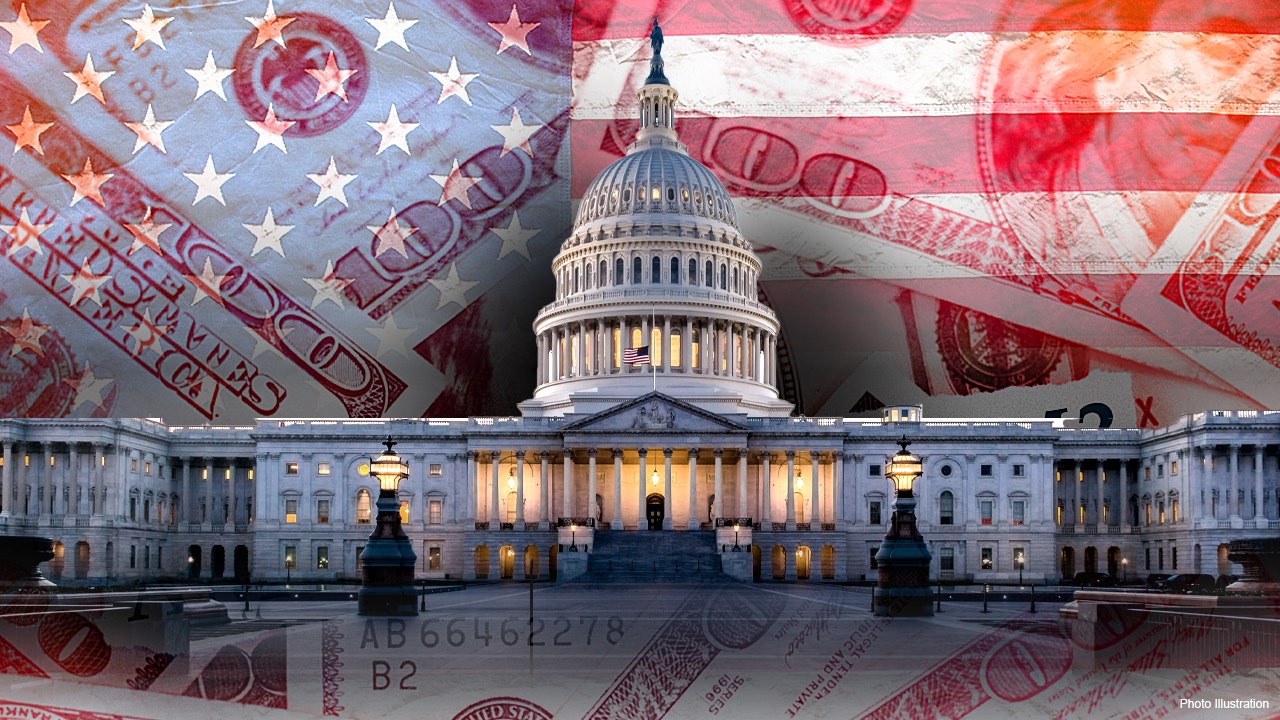The U.S. national debt surpassed $36 trillion for the first time in the nation’s history on Friday as the federal government continues to accumulate debt at a record-setting pace.
New data from the Treasury Department released Friday afternoon showed that the gross national debt hit $36,034,994,586,981.97.
The $36 trillion debt milestone comes just months after the U.S. eclipsed the $35 trillion mark in late July 2024. The national debt has passed other trillion-dollar milestones in the past year, as the $34 trillion mark was reached in early January 2024 and the $33 trillion threshold in September 2023. By comparison, the national debt hovered around $907 billion just four decades ago.
The U.S. topping $36 trillion in total debt comes as the debt held by the public – a metric favored by economists that excludes debt held in intragovernmental accounts like the Social Security trust funds – is projected to reach 99% of the size of the U.S. gross domestic product this year.
FEDERAL DEFICIT NEARS $2 TRILLION AND GETTING WORSE, EXPERTS WARN
“While $36 trillion in gross debt is certainly sobering, what’s even more concerning is the underlying fiscal challenges we face and the lack of seriousness with which our elected leaders are addressing them,” Maya MacGuineas, president of the Committee for a Responsible Federal Budget (CRFB), told FOX Business.
“The national debt is on course to reach a new record share of the economy within the next presidential term, interest costs are exceeding what we spend on nearly every line item in the budget, and our trust funds are heading towards insolvency and automatic benefit cuts, all because of our inaction,” MacGuineas said. “Instead of treating these milestones as mundane, lawmakers should prioritize putting forward plans to get us on a more sustainable fiscal path.”
ECONOMIST OFFERS BIPARTISAN PLAN TO AVOID FINANCIAL CRISIS BY STABILIZING AMERICA’S SURGING NATIONAL DEBT
The nonpartisan Congressional Budget Office has projected the debt held by the public will reach a record level of more than 106% of GDP in 2027, breaking a nearly 80-year-old record set in 1946 when the U.S. was in the midst of post-World War II demobilization.
After that milestone is reached in the next few years, the debt-to-GDP ratio is projected to surge in the following decades.
Federal budget deficits have widened in the last few years amid the rise in interest rates, which increases the net interest costs incurred by servicing the outstanding debt.
Mandatory spending programs including Social Security and Medicare have exacerbated that trend, with the safety net programs facing rising costs amid the aging of America’s population.
US NATIONAL DEBT TO SURGE TO RECORD LEVELS WITHOUT REFORM, RAISING PROSPECT OF DEBT CRISIS
The federal government ran the third-largest budget deficit in U.S. history in the recently concluded fiscal year, which totaled $1.834 trillion in fiscal year 2024.
The deficit in FY2024 was $139 billion larger than the deficit recorded in the prior fiscal year as the growth in federal spending outpaced the rise in tax revenue.
Spending on net interest payments on the debt rose by $240 billion in fiscal year 2024 compared with the prior year and exceeded spending on defense and Medicare.
Social Security spending increased $107 billion and Medicare expenditures were up $25 billion from one year ago.
NEXT PRESIDENT FACES FISCAL FIGHT IN 2025 OVER DEBT, DEFICITS AND TAXES
The federal government crossing the $36 trillion threshold for the first time comes as policymakers face a host of fiscal deadlines in 2025, including expiring tax cuts and budget caps as well as a looming fight over the debt limit.
“The election is behind us, but the national debt keeps charging full steam ahead,” Michael Peterson, CEO of the Peter G. Peterson Foundation, told FOX Business. “America crossed $35 trillion in debt over the summer and sped past $36 trillion before Thanksgiving. This debt spiral needs to stop as the new administration and Congress face major fiscal deadlines in 2025.”
“With America’s debt rising unsustainably and inflation concerns top of mind, 2025 is a critical year for our economy and fiscal standing. With a growing economy, low unemployment and inflation improving, now is the time to solidify our fiscal future, not worsen it.”
Read the full article here


